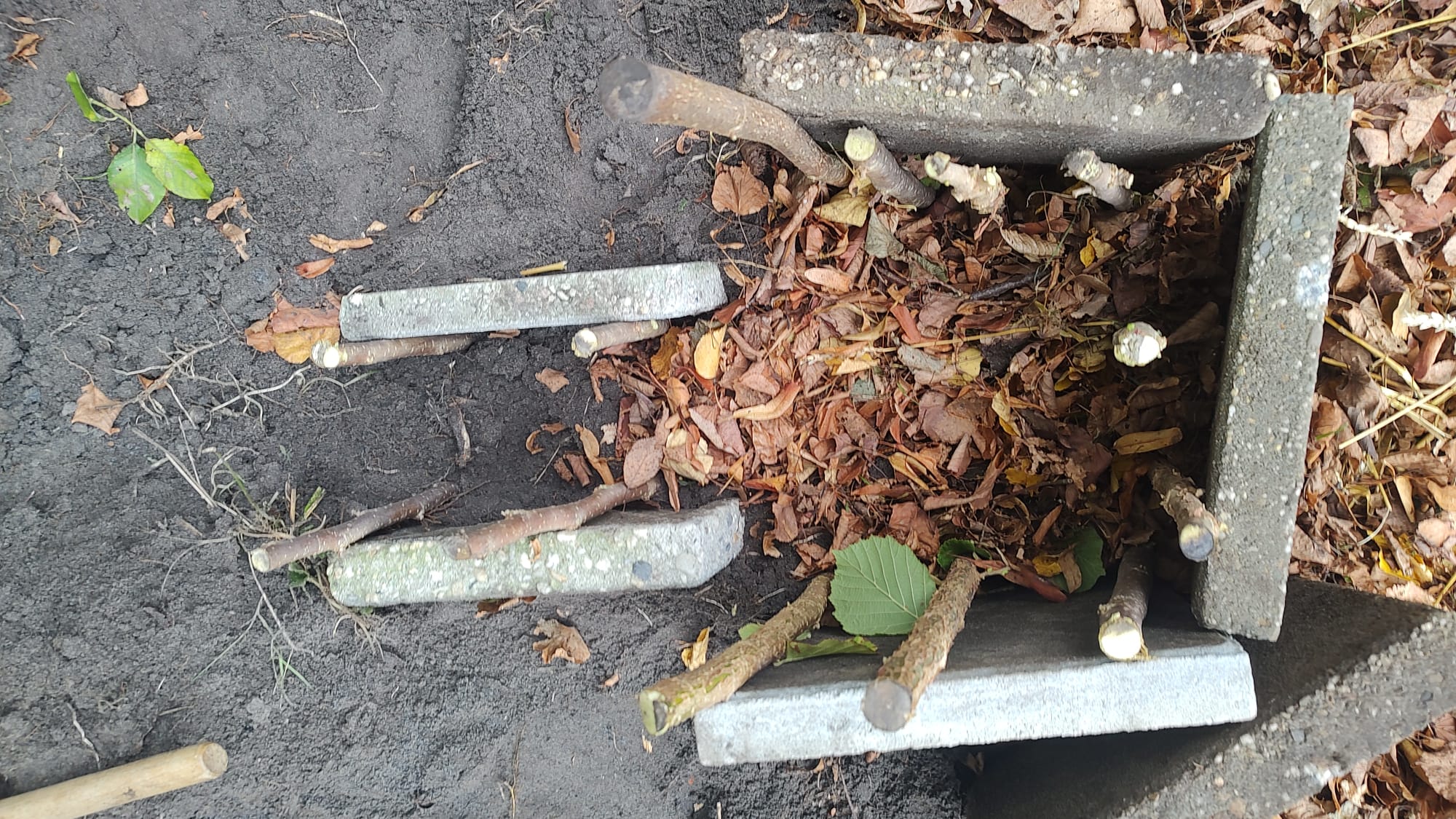
Constructing the nest chamber & tunnel
With the ground prepared and drainage in place, it’s time to build the heart of the Hedgehog Dome: the nest chambers and the entry tunnels. These must be carefully designed so that hedgehogs feel safe, dry, and protected from predators.
Nest chamber dimensions
- Size: Each chamber should be around 40–50 cm wide and 30–40 cm deep (16–20 × 12–16 inches). This provides enough space for an adult hedgehog or a mother with hoglets, while keeping the chamber snug and warm.
- Height: About 20–25 cm (8–10 inches) inside, enough for insulation above without making the chamber feel too open.
- Multiple chambers: If you build more than one, make sure each is fully separated with its own entrance tunnel; hedgehogs are solitary and do not share nests.
Positioning the chambers
- Placement: Lay out chambers in a curve or semi-circle around the drainage base, leaving space for tunnels to extend outward.
- Roofing: Use bricks, stones, or reclaimed slabs to form the top, then cover with soil or bark to create natural insulation.
- Orientation: Keep chambers away from direct sunlight and prevailing winds. Shaded, sheltered spots work best.
Entry tunnels
- Length: Each tunnel should be 30–40 cm (12–16 inches) long to prevent predators from reaching inside.
- Width: Around 13 × 13 cm (5 × 5 inches); just wide enough for hedgehogs, too narrow for most predators.
- Angle: Slightly sloped upward into the chamber to keep rainwater out.
- Materials: Use bricks, stones, or short pieces of pipe (only if untreated and wide enough), covered with soil to blend into the mound.
Safety features
- Hidden entrances: Face tunnels toward hedges, shrubs, or other natural cover rather than open spaces.
- Predator protection: Ensure entrances are narrow and stable; no loose stones or gaps predators could dig through.
- Dry design: Always slope tunnels and position them above the drainage layer to avoid water flowing inside.
Next step
Once your chambers and tunnels are built, you’ll cover them with soil to form the dome and add planting for camouflage and biodiversity. This will be the focus of the next lessons.